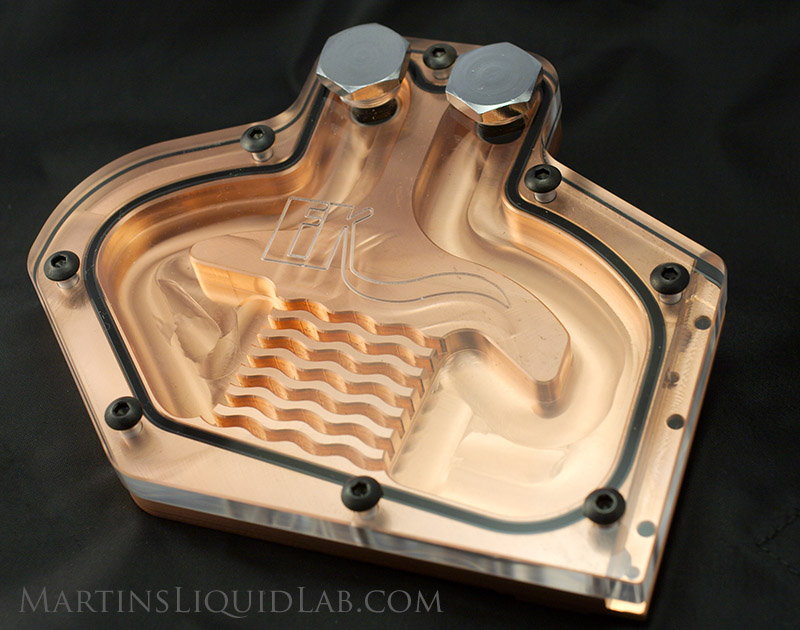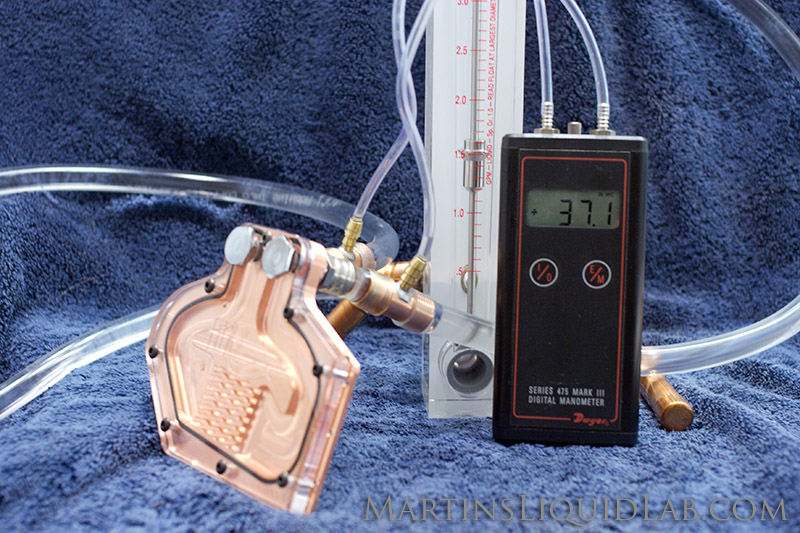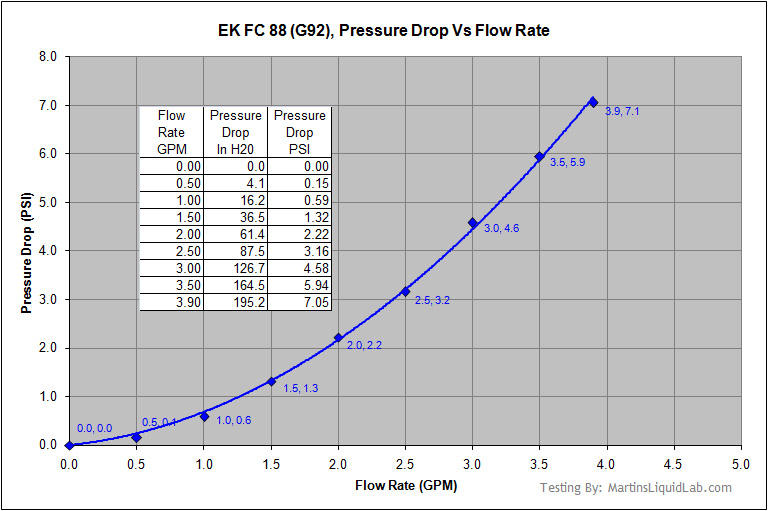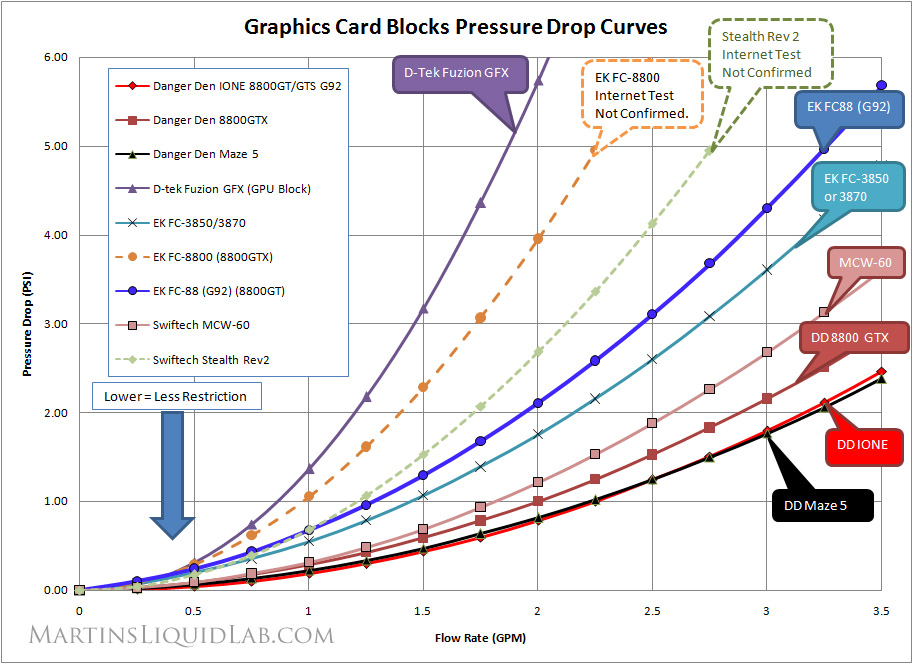

EK FC-88 GT/GTS (G92) Waterblock Flow Testing
Introduction
Welcome to my pressure drop testing of the EK FC-88 full coverage waterblock for the 8800GT or 8800GTS (G92) video card. This page will focus on the pressure drop and flow characteristics only for this waterblock only.
First off I want to give special thanks to silverphoenix from XtremeSystems Forums, for making this test possible. He shipped and loaned me this block for testing...
Thanks Silverphoenix!!
The block is a very finely CNC machined block of copper with a black aluminum anodized extension. The attention to detail in the machining is very high as can be seen in CNC machined chamfers on all sharp corners. The block is very very nicely machined.
Hydraulics and Pressure Drop Testing
The most scientific way to determine a blocks hydraulic resistance is to test pressure drop. Pressure drop is a measurement of pressure loss across a block that varies with flow rate. This is basically a measurement of energy loss, and directly influences how much flow rate you will have.Equipment:
- Dwyer Digital Manometer 475 Mark III - Accuracy .5% of Full Scale. Range 0-200" W.C., Resolution .1" W.C.
- King Instruments 7520 Series 0-5GPM, 250mm scale - Accuracy 2% of Full Scale. Range 0-5GPM, Resolution .1GPM (can be interpolated to .02GPM)
- Water Source - Household water pressure - 50PSI at >5GPM - Because flow rate readings are instantaneous, household tap water and water pressure are a good and powerful source for pressure drop testing.


And if you're not familiar with
what this means, I'm providing a relative chart below with several GPU
waterblocks. For increase flow rates, the lower pressure drop
results will net the best flow rate results. This is important
for users with multiple block loops, as you need to keep an eye on flow
rate and make sure you don't install too many high restriction blocks
in the same loop to the point where flow rate is lowering to the point
where your other blocks or radiators in the same loop begin to loose
some thermal efficiency.

The EK FC88 (G92) is about average
for pressure drop in the various GPU blocks I've tested and found other
curves for. You should take that into consideration as
well as thermal performance of the blocks. It is also a block
with an amazing attention to detail in the machining finish, extremely
nicely finished block.
Where to buy
Petra's Tech Shop